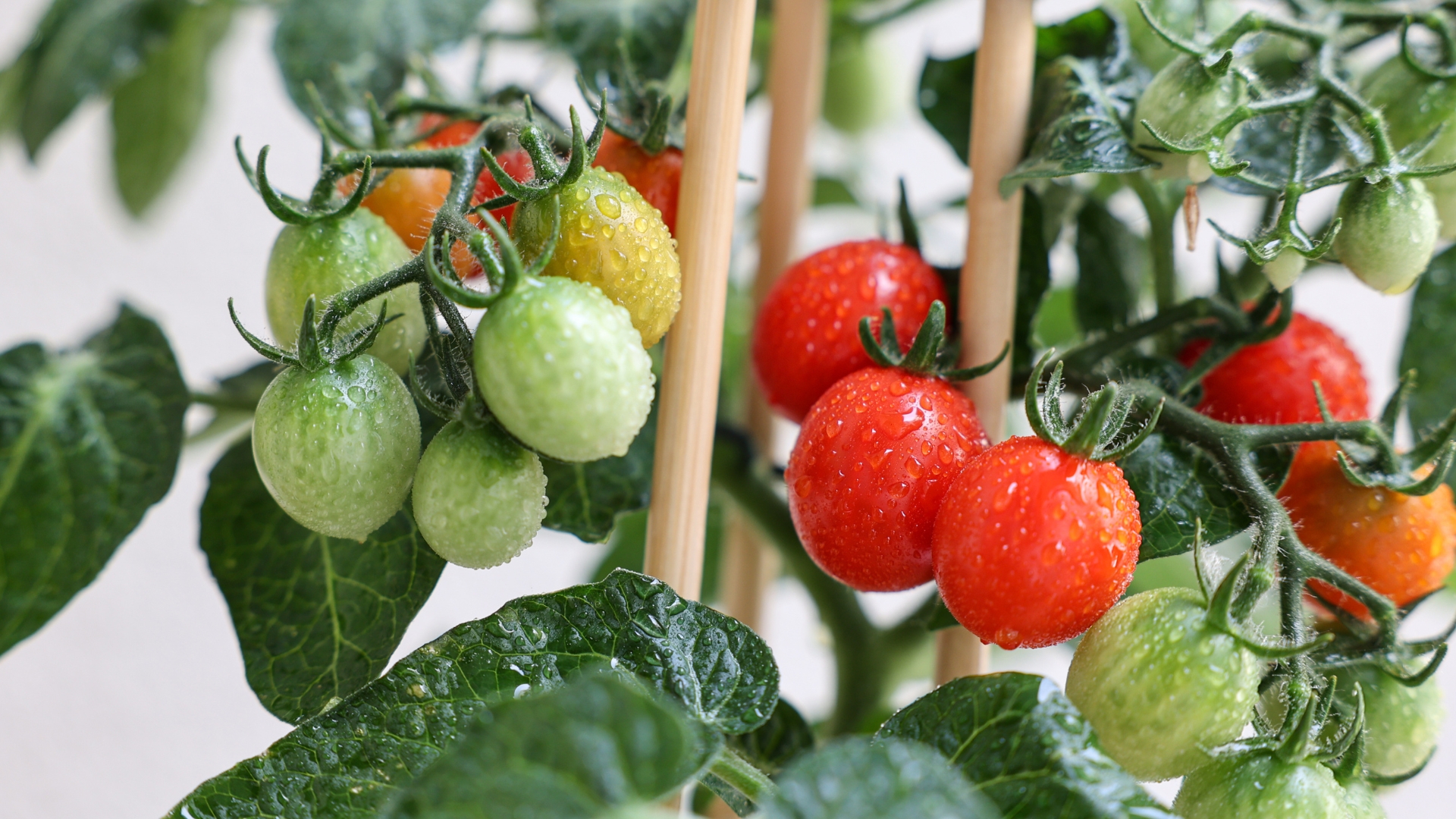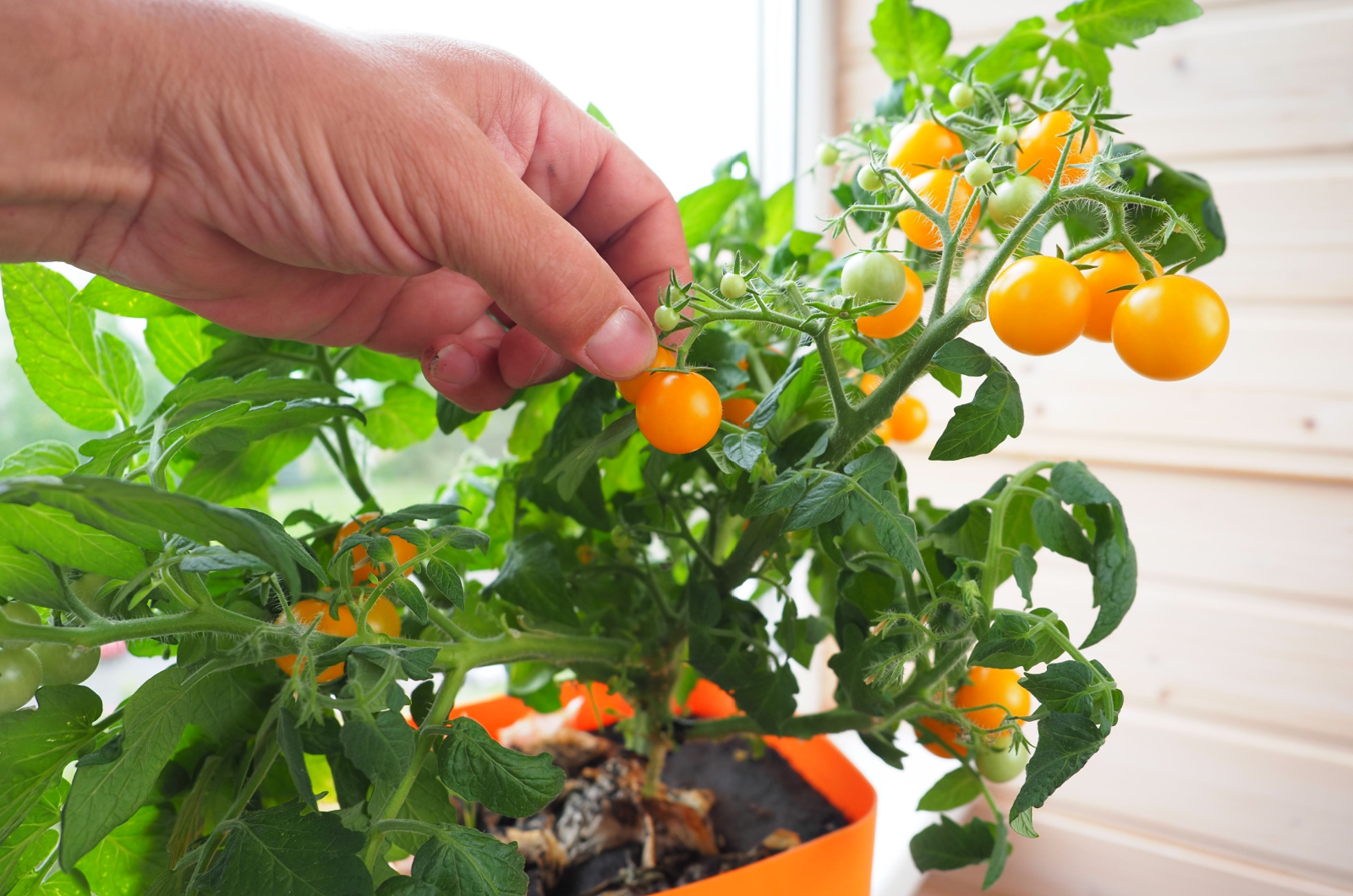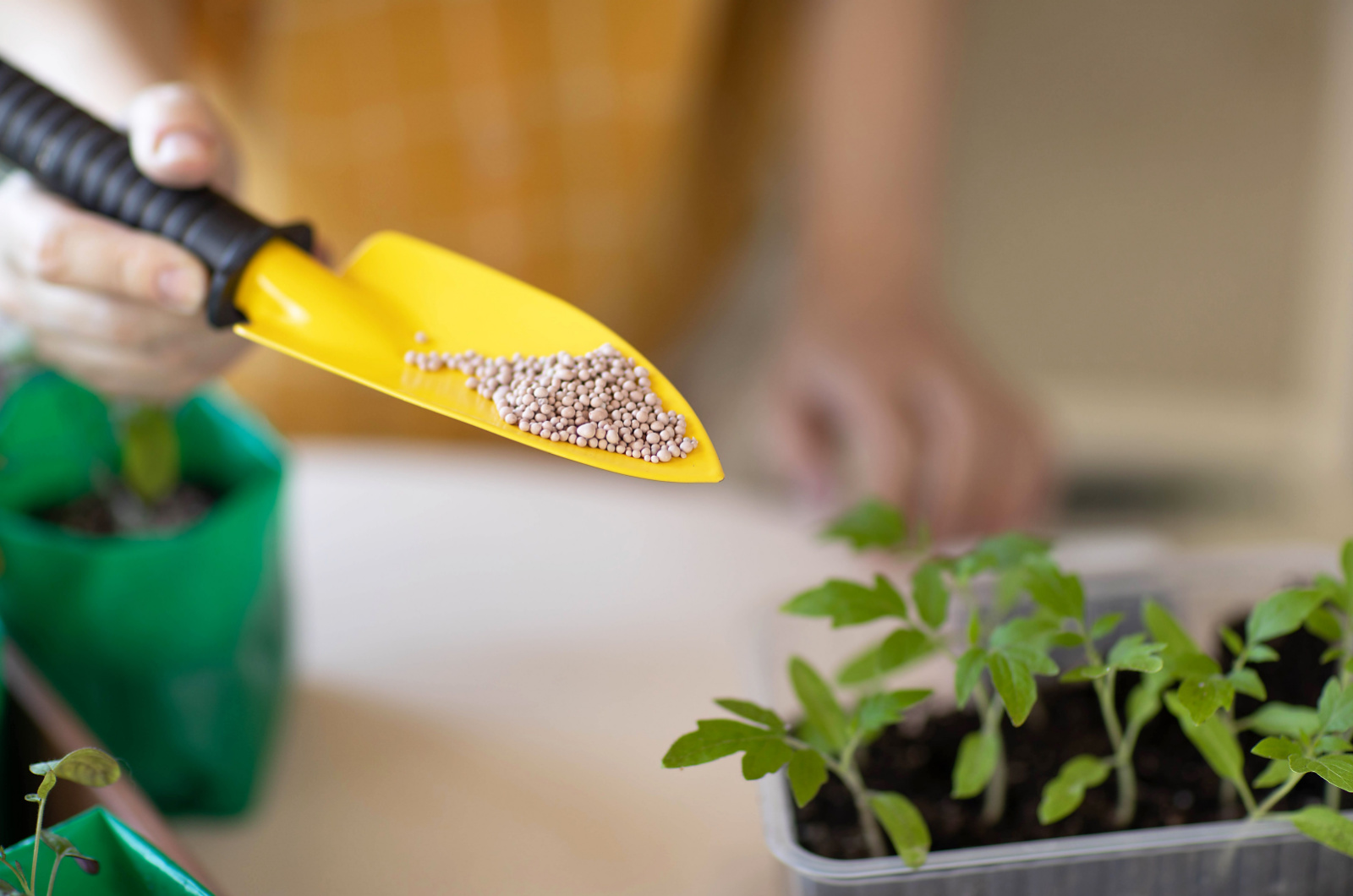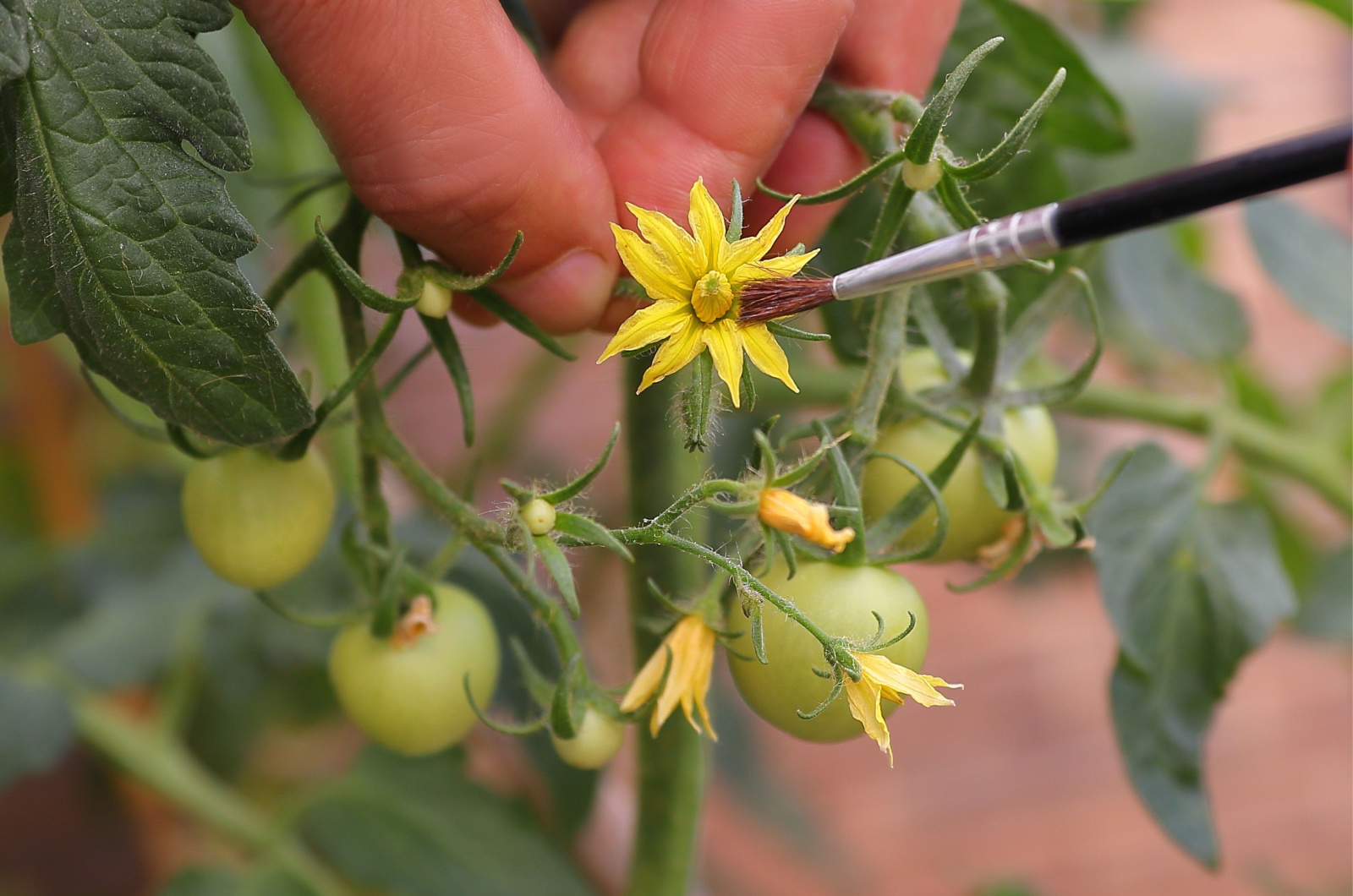Missing the taste of summer tomatoes?
Good news!
You can grow them right inside your home during winter. It only takes a couple of adjustments and you get to enjoy delicious tomatoes whenever you want.
Now, we are going to share some tips on how to grow tomatoes indoors during the winter season. Stay tuned to find out more!
Choose The Best Varieties For Growing Indoors
There are two types of tomatoes you can choose from: determinate and indeterminate.
Determinate tomatoes reach one size and are ready for harvesting, while indeterminate can continue to grow and produce fruits continuously during the growing season.
For indoor growing, it’s better to use determinate tomatoes because they are compact and easier to control. Look for varieties that are labeled for container or patio growing. Stick to smaller varieties such as paste or cherry tomatoes.
Here are some good options:
• Tin Tim Tomato – a cherry tomato that produces fruits in 50 to 60 days.
• Red Robin Cherry Tomato – a dwarf variety that produces sweet tomatoes.
• Early Girl Bush – a compact cultivar with bushy growth that’s great for slicing tomatoes.
• Patio Choice Red Hybrid Cherry Tomato – a determinate tomato with high yields of fruits that look great in hanging baskets.
This might be useful: 8 Simple Strategies To Get More Tomatoes And Boost Your Harvest
Start The Tomato Seeds Indoors
You most likely won’t find ready-to-go transplants during fall or winter in your local garden shops or nurseries. Therefore, starting your own seeds indoors is the only option you have.
Choose a container that is large enough to support your new tomato plant. Make sure that your tomato container has drainage holes in the bottom. Dwarf varieties can be started in 6- to 8-inch pots, while bushier ones need a container that is about a foot in diameter.
Don’t grow more than one plant in a single pot, but you should sow several seeds for successful germination. Thin the tomato seedlings once they begin to sprout.
Take Good Care Of Your Indoor Tomatoes
Now is the time to take good care of your indoor tomatoes. Start by planting them in light, fertile, well-draining soil. You can add compost or worm castings before planting so that your new tomato plants have enough nutrients to grow and thrive during the winter.
We all know that tomatoes need a lot of sunlight for normal development. This can be tricky to achieve during winter because the days are shorter. But you can always use artificial grow lights for your precious little tomatoes!
Simply place them a few inches above the plant and move them as your tomatoes grow. Make sure to keep the lights on for 12 to 14 hours during the day. You can also put them on a windowsill and then add a few extra artificial lights.
Don’t put your indoor tomatoes close to drafty windows as temperature fluctuations might damage the plants. Use a humidifier to increase humidity levels as they tend to drop during the colder months.
Remember to water your winter tomatoes when the top few inches of the soil dry out. Don’t let them sit in water for too long because they might start rotting!
For indoor tomatoes, apply half a dose of commercial liquid all-purpose fertilizer every two weeks. As an alternative, worm castings or compost tea make excellent organic slow-release fertilizers.
Related: A Complete Guide To Fertilizing Tomato Plants
Remember To Pollinate
There are no pollinators buzzing around during the winter season, which is why you’ll have to take matters into your own hands (quite literally). Hand-pollinate your tomatoes or add an oscillating fan that will move the pollen around.
You can also use a swab or Q-tip to transfer pollen from one flower to another.
Read more about pollination here: A Step-By-Step Guide On How To Pollinate Tomatoes By Hand




